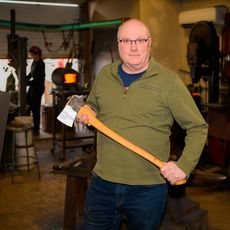
Cresting the third dimension: 3D printing sparks new manufacturing wave in Maine
 Photo / Jim Neuger
Mike Ballin, co-founder of Blueprint Surf, rides a wave at Higgins Beach in Scarborough on a 3D-printed surfboard.
Photo / Jim Neuger
Mike Ballin, co-founder of Blueprint Surf, rides a wave at Higgins Beach in Scarborough on a 3D-printed surfboard.
As bright late afternoon melts into dusk at Higgins Beach in Scarborough, Mike Ballin is out surfing on a white translucent board with a honeycomb-like latticed core. Though the waves aren’t at their most powerful, he gets in a few decent rides before sundown.
“This board is a lot more fun when the waves get to be chest- to shoulder-high, because it’s a pretty versatile board,” he says after exiting the water.
The next day in Portland where Ballin makes surf boards for a two-person startup called Blueprint Surf, a 3D printer encased in glass at Northeastern University’s Roux Institute glides back and forth to stack hundreds of layers of recycled plastic filament into interconnected geometric shapes. Set to run around 24/7 for four days, the six-foot-long contraption emits a quiet hum that Ballin likens to white noise. He doesn’t even need to be there, since he gets real-time updates on his phone from the $20,000 machine imported from Israel.
Ballin finishes the boards in South Portland, where they get sanded, fitted with thin strips of poplar to help hold their shape and coated with bio-epoxy resin. Unlike plastic foam boards, Blueprint’s are intended as an environmentally friendly alternative that generates less waste.
Ballin, who studied environmental science at Colby College, teamed with engineer Luke Diehl to start Blueprint in 2021. The startup is part of a new wave of Maine manufacturers leading the 3D printing niche into the mainstream — at least for low-volume production and prototyping.
$20B market and growing
The global 3D printing market, estimated at $20.4 billion in 2023 by GrandView Research, is projected to reach close to $90 billion by 2030, registering 24% in compound annual growth.
North America is the largest market with more than a third of global revenue in 2023.
Aggressive research and development is expected to drive growth in coming years, spurred by demand from industries including health care, cars and aerospace and defense.
But there are also obstacles, as flagged in a report by MarketsandMarkets, a market research company based in India. It cites high initial investments — in hardware, software, materials and education — as a significant barrier to adopting the technology while noting that smaller desktop printers offer an easy-to-use, less expensive alternative.
3D printing is a form of additive manufacturing that entails creating an object by adding one layer at a time until a three-dimensional object is formed. While the technique has been around since the 1980s, modern printers can handle a much broader array of materials, allowing for faster and more nimble product development at a fraction of the cost of traditional manufacturing. It also offers high customization.
Dabblers and ‘shining stars’
In Maine, companies from early-stage startups to established manufacturers are 3D printing a range of parts and products.
“A lot of them are dabbling, but you also have some shining stars of companies really putting 3D printing through its paces,” says John Belding, director of the University of Maine’s Advanced Manufacturing Center and co-director of its Center for Additive Manufacturing of Metals. While he counts aerospace manufacturer Pratt & Whitney among the “shining stars,” he says 3D printing is also attractive for smaller companies which may need a part in thousands of units rather than millions to make an injection mold that might otherwise be very expensive.
That’s definitely a plus for Pratt & Whitney, a large employer in North Berwick that aims to use 3D printing to make jet engine parts in a process that project manager Brad Williams says will offer several advantages.
“It enables you to ‘fail quickly,’ and make adjustments at a minimal cost,” he explains. “With castings, there is a large front-end capital investment for tooling to support it.”
He also notes that additive manufacturing carries no upfront tooling costs and, with the right design tools, has the potential to open up new product design opportunities.
Where tradition meets innovation
A niche player in Maine’s $3 billion-plus outdoor recreation industry, Brant & Cochran is a South Portland-based maker of artisanal axes working with UMaine to print handles, heads and metal drifts used to make the hole or eye for the handle.

“We used to make the drifts by hand, but if you ground them a little bit too small, you just threw away $500 on the metal,” says Mark Ferguson, the company’s president and co-founder. With 3D printing, “we can approve the size” and then share that design with a machine shop to make a drift “we know is going to work right out of the box,” he says.
Offering a wider industry perspective, Maine Outdoor Brands Executive Director Jenny Kordick says that 3D printing is quickly gaining traction in that sector, particularly for prototyping and accelerating product innovation.
While not all businesses are working with academic institutions, Kordick says it’s exciting to see some “leveraging cutting-edge resources from institutions like the University of Maine and the Roux Institute to push the boundaries of design and bring new ideas to market faster.”
Marine maintenance in Machias
Up the coast in rural Washington County, Ben Bunker is a 15-year marine industry veteran employed as a sales manager at Whitney’s Tri-Town Marine in Machias.
Every year from early September through the end of December, he helps colleagues drain fuel from boats before the vessels get shrink-wrapped and stored for the winter. Done the traditional way by pressing a screwdriver or nail into the fuel line isn’t the safest or most hygienic job, given that the task causes gas to spray everywhere.

“It’s not good to get on your skin, it’s dangerous and it’s a fire hazard — but that’s the way it’s been done forever,” Bunker says. “Day after day I would come home and my wife would say, ‘You reek of gas.’”
After a search for a tool to do the job better turned up empty, Bunker joined forces with an engineer to create a solution using a 3D printer that cost around $800. They spent the next two years working on designs and testing a dozen prototypes.
“I did the drawings, and he created a program to be able to print,” Bunker recalls. “I would bring them to work first thing in the morning and test all the fittings, and then write a report on what works and what doesn’t. By the next morning I’d have Version 2. We did that for weeks, and finally came up with the winner.”
Through a company he founded with his wife called J & B Designs LLC, Bunker launched two products to drain marine fuel during winterization or emergency maintenance. Branded as Safely Drain and made with a hard plastic that’s ethanol and gasoline resistant, one is a hand-held device that drains fuel into catch basin to allow for easy handling and controlled flow, while the other gets attached to a Mason jar or other receptacle. Both are crafted to fit most marine fuel fittings to make end-of-season or emergency maintenance quick, easy and clean.
Booming business
Now using six printers imported from China, Bunker has produced around 10,000 devices since June that he’s selling wholesale, online and on the TikTok Shop.
With no background in manufacturing, Bunker says he never would have been able to bring his idea to life by contracting out the production. Going the 3D route ensured the design wouldn’t be copied and allowed him to make quick changes during product development.
With printers running nonstop, Bunker says he can produce up to 1,260 units a week.
“When I started this, I wanted to make enough money to pay off the house,” he says. “But now that we’ve had such good feedback, I hope to run with this for a little while.”
To other aspiring manufacturers with an interest in 3D printing, Bunker says, “Do your research on what printer is going to work best for what your product is.”
Mark Ozimek, a consultant working with Bunker, says he’s impressed with how his client identified a persistent industry problem he was able to solve with minimal investment.
“What strikes me about Ben’s innovation is how 3D printing removed the traditional barriers between ‘I have an idea’ and ‘I have a product in customers’ hands,’” Ozimek says. “That combination of deep customer insight and accessible manufacturing is particularly powerful for Maine entrepreneurs who can now compete nationally.”
‘Tool in the toolbox’
Among entrepreneurs who’ve been doing 3D printing for more than decade, Michael Vickery in Biddeford makes a wide range of products from industrial fixtures to consumer products like LED-illuminated knobs attached to ropes that performers swing around on stage at festivals.
A former adjunct professor and operations manager at the University of New England, he named his company STEAMfruit LLC from “STEM” and “art” to reflect his combined interests — though the “fruit” part has caused some confusion over the years.

Working on his own with subcontractors as needed, Vickery says that “3D printing has become just a tool in the toolbox.” Currently focused on industrial design and rapid prototyping, he says he expects to make equipment upgrades in coming months.
“What keeps my interest is the rapid advancement of this technology, which is fascinating to follow but difficult to keep up with,” Vickery says from his workshop inside Pepperell Mill. “It changes so quickly that my equipment can become obsolete in a couple of years.”

Bending with the times
Based at the Roux’s Founder Residency in Portland, Jaison Patel and Josh Baum of Tubender have pioneered a portable machine for electricians to bend metal conduit — used to protect electrical wires and cables — faster and with less waste than conventional methods.
As the engineers-turned-entrepreneurs gear up to move from prototyping to beta testing, Patel says they expect to price the machine at a fraction of the $1 million than current tools fetch.
“While Tubender uses the same programming language used by 3D printers, the portable machine works by forming or shaping an existing material rather than adding materials; the prototype also has some parts that have been 3D printed through that may not be the case when they launch commercially in about 18 months.

“I don’t think the state of manufacturing is at a state where we can do additive manufacturing with tubing just yet,” says Patel. “It definitely could happen in the future.”
Back in the surfing universe, Ballin says he aims to buy a second 3D printer at some point – the first was funded with a $25,000 Maine Technology Institute grant — and possibly move to a bigger space. Boards are priced at $700 to $900 as the owners take a measured approach to growth.
“Although we think that our boards could be worth a lot more, we want more people to buy them,” he says. Ironically, that might give him even less time for his waterborne hobby.


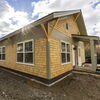








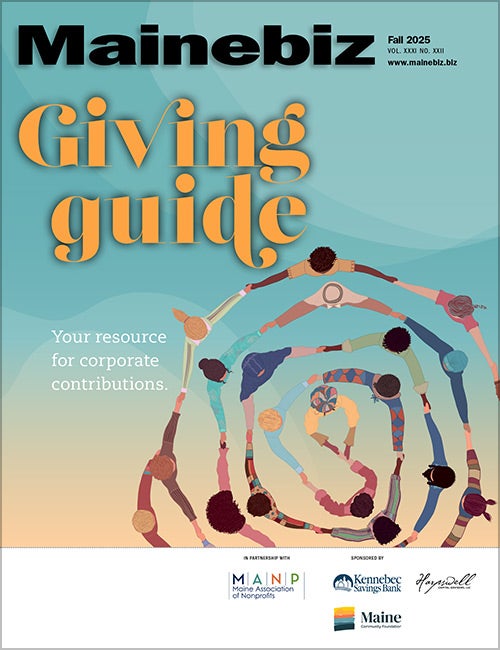
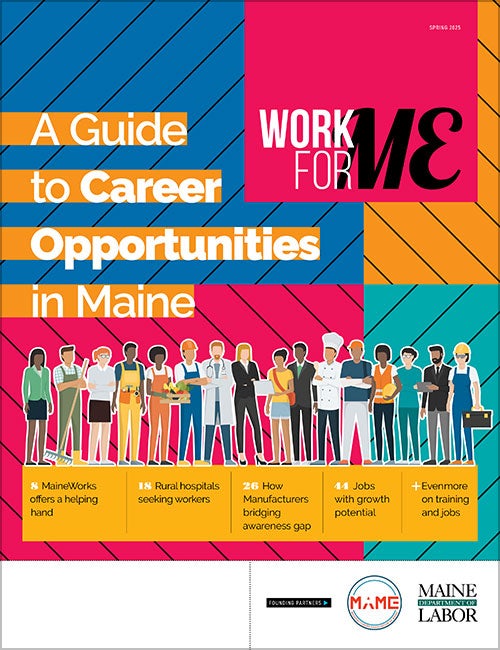
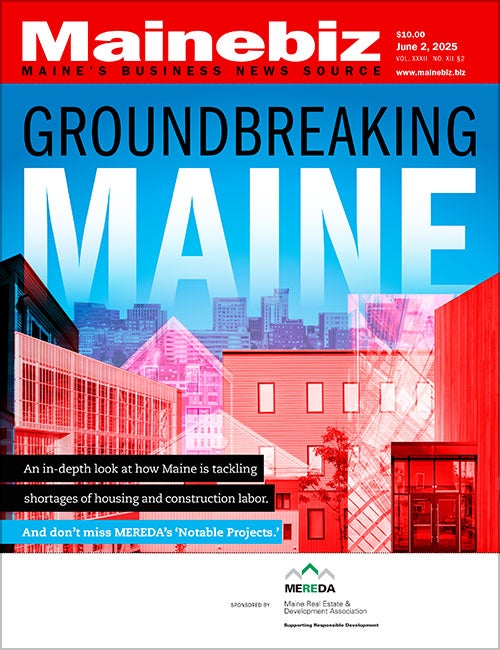

0 Comments